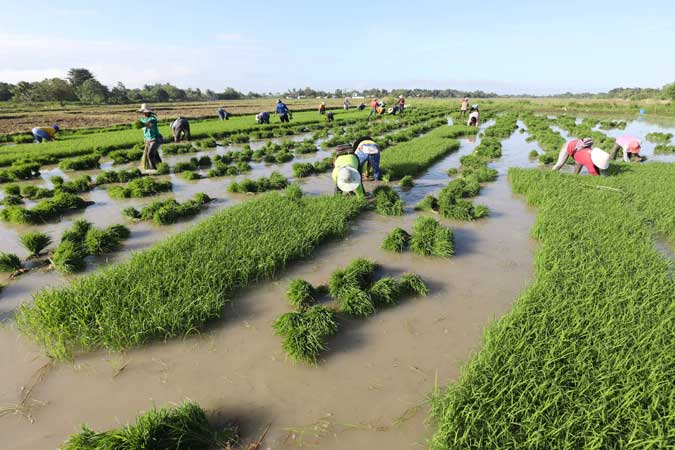Introspective
By Kristine C. Francisco-Alcantara

On the first of May in 1903, thousands of workers from the Union Obrera Democratico de Filipinas marched across Plaza Moriones demanding and advocating for independence as well as a fair day’s wage for a fair day’s work. From this movement sprang the official national May day holiday and the signing of Presidential Decree No. 442 — the Labor Code of the Philippines. Now, 118 since and while indeed, national policy planning mechanisms are in place to reach the national target for job generation, is the work or hanapbuhay available for Filipinos trabaho — labor, or pagkakakitaan (profit), as a means of securing the necessities of life?
The most recent official labor statistics from the Philippine Statistics Authority for February 2021 show that the Philippines’ labor force participation rate is at 63.5%, with an unemployment rate of 8.8% and underemployment rate at 18.2%. Among the employed persons in February this year, 7.9 million Filipinos declared themselves as underemployed and expressed their desire to have additional hours of work in their present jobs, have an additional job, or to have a job with longer hours of work. Apart from the double burden of unpaid domestic work, women also had a lower labor participation rate at 50.9% and unemployment rate at 17.6%. The number of unemployed Filipinos who are 15 years old and over were also posted at 4.2 million, a figure steadily growing from the past months with the age group of those 15 to 24 years old comprising 33% of the total number of unemployed.
While much has been said about the problem of employment, underemployment is the quiet and bigger unsolved issue — many workers have no choice but accept lower quality jobs or work in the informal sector. In fact, and despite the massive impact of the negative shock that the COVID-19 pandemic has brought on employment growth and participation rates, over time and albeit at a slower pace than needed, it is possible for the rates to go back to their previous levels. However, underemployment and casual wage jobs remain consistent at 16% to 22% from the last 20 years.
In analyzing the data by industry, the agriculture sector, industrial, and especially the services sector comprise the total of underemployed persons at 49.6% in February 2021. This is significant as much of the labor force in the past two decades has been absorbed in the services sector and, while providing work, it remains casual, informal, and urban based.
Policy reform and action should then be inclusive and sustainable. More than the call to reach the target employment rate for the country, we need to increase the derived demand for labor — or the demand for the goods and services in the sector that needs the workforce. As a start, better investor confidence in the agriculture sector is key to both job efficiency and food security. The Philippines needs to attract investors, both foreign and local, in infrastructure and research development for sunrise industries — agri-business, creative industries, supply chain logistics, and health and wellness to name a few.
Enabling environments are also critical to allow for the main job generators in the country to grow — the small and medium enterprises (SMEs). Credit and financial access to SMEs, with a particular view to impact and gender investing, is a good start in levelling the playing field for the disadvantaged population. Small business and gender procurement from the government and inclusion of sustainability scorecards in corporate governance likewise reinforces the guarantee that capital flows can trickle down to the underserved.
Finally, educational models need to be adapted to modern markets. Strengthening technical training for the youth for in-demand jobs and occupations is a short-term need, with the goal of involving the private sector in curriculum development and apprenticeship programs to solve the mismatch issued through better demand and supply coordination.
The key to tackling this urgent concern is the recognition that hanapbuhay is a source of life and more than poverty alleviation, it also goes into the root of human needs — a loss of freedom, cynicism in relations, motivational learning, and gender and age discrimination. Perhaps, as an annual reminder, May Day is about the aspiration to promote inclusive and sustainable economic growth by providing productive employment and decent work for all. It is a celebration of the quiet dignity of labor and transforming work — hanapbuhay — to livelihood — kabuhayan.
Kristine C. Francisco-Alcantara is the Managing Partner of Abad Alcantara and Associates and a Fellow of the Foundation for Economic Freedom.